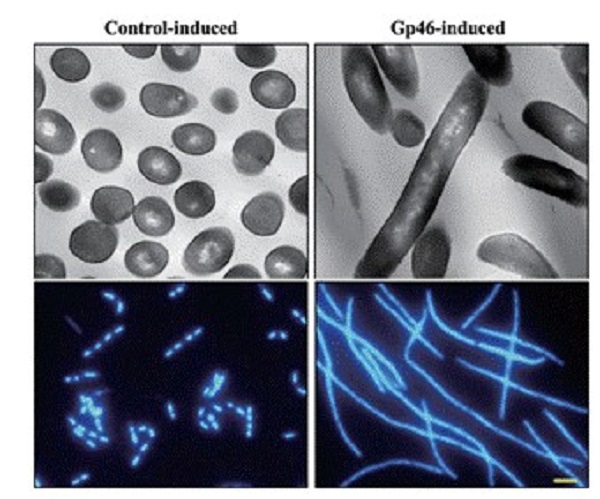XJTU researchers make progress in bacteriophage inhibition and antimalarial strategies
A detailed mechanism by which bacteriophages inhibit bacteria has been discovered by researchers at Xi'an Jiaotong University (XJTU).
They used nuclear magnetic resonance technology to investigate the detailed mechanism through which bacteriophage protein Gp46 inhibits bacteria by binding to bacterial histones at the molecular level. This was the first time that bacteriophages had been found to encode bacteriostatic genes targeting the bacterial histone-like HU.

The expression of superprotein Gp46 in model strains causes cells to lengthen and the nucleoid region to disappear, eventually leading to bacterial death.
This research elucidates important information, such as the molecular mechanism of the broad-spectrum bacteriostatic and insecticidal abilities of the Gp46 superprotein, as well as a new target, which could have an important impact on many fields, such as bacteriophage research, histone fields, antibiotic research and development, and antimalarial drug research and development.
Since histone-like proteins are highly conserved in bacteria and apicomplexan parasites, Gp46 is a new class of broad-spectrum antimicrobial protein.

The researchers found that the superprotein Gp46 can broadly inhibit most clinically important drug-resistant bacteria, such as staphylococcus aureus, Acinetobacter baumannii, and Klebsiella pneumoniae, as well as apicomplexan parasites (including Plasmodium, Toxoplasma gondii), laying an important foundation for the prevention and control of drug-resistant bacteria and plasmodium in the future.
The research results were published online in the Proceedings of the National Academy of Sciences of the United States of America titled Bacteriophage protein Gp46 is a cross-species inhibitor of nucleoid-associated HU proteins. (link to the paper: https://www.pnas.org/content/119/9/e2116278119.short?rss=1)
The research was led by Liu Bing and Wang Yawen's team from the First Affiliated Hospital of Xi'an Jiaotong University and Wang Hongliang's team from the university's Health Science Center.
The project was financed by the National Natural Science Foundation of China.

